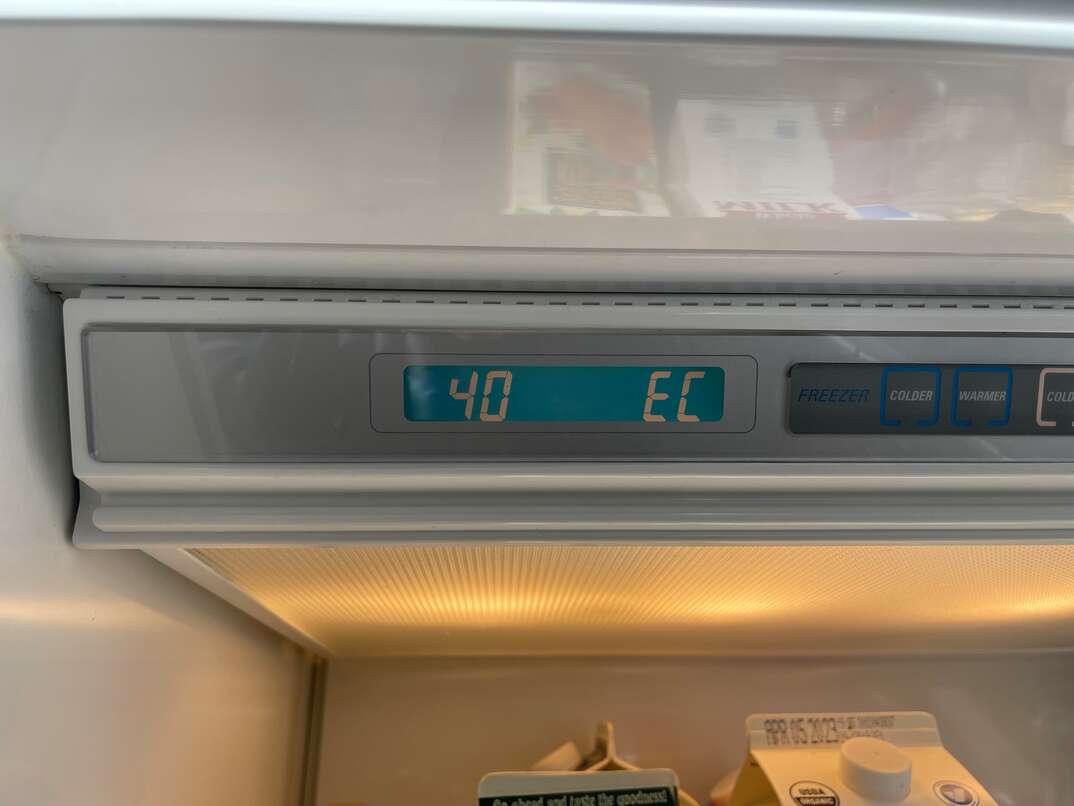- AppliancesElectriciansHVACLandscapingLocksmithPest ControlPlumbingRenovationRoofingT V RepairAll Home Improvement
- Car AccidentClass ActionCorporate LawCriminal DefenseDivorce LawEmployment LawFamily LawFinancial LawLegal AidMedical Injury LawyersMedical MalpracticeReal Estate LawWater Fire RestorationAll Legal
- InvestmentRetirementAll Finance
- Animal InsuranceAutoGeneral InsuranceHealth PolicyHome RentersAll Insurance
- DentalHealth SpecialistsAll Medical
- Animal CareVeterinaryAll Pets
- Auto GlassTowingAll Automotive
What Temperature Should Your Fridge Be?

Refrigerators have been a staple in kitchens across the country for nearly 100 years. While refrigerators are effective at keeping food safe, it’s crucial that you keep it set to the right temperature.
According to the U.S. Department of Agriculture, your fridge should be set no higher than 40 degrees Fahrenheit (4 degrees Celsius).
While the government sets the standard refrigerator temperature at 40 degrees Fahrenheit (4 degrees Celsius), others consider the ideal fridge temperature 37 degrees Fahrenheit (3 degrees Celsius). This step ensures your fridge remains cold enough to keep your food safe.
What Happens If the Temperature Is Too High?
If the temperature inside your refrigerator goes above the recommended temperature, it could cause the food inside to spoil. Even worse, it can cause bacteria to start to grow. This bacterium can lead to dangerous food-borne illnesses, such as E. coli, salmonella and listeria, which can lead to abdominal pain, hospitalization and, in severe cases, death.
If the temperature in your fridge goes below 34 degrees Fahrenheit (1 degree Celsius), it can cause the food inside to start freezing. This issue could reduce the quality of food in your fridge. For example, fruits and vegetables can start to brown faster or turn mushy.
More Related Articles:
- How Much Does Appliance Repair Cost?
- Should I Get the Extended Warranty When I’m Buying an Appliance?
- Scratch-and-Dent Appliances: What to Know Before You Buy
- Why Does My Dishwasher Smell?
- My Washing Machine Won’t Drain! Here are 3 Ways to Fix It
What Temperature Should Your Freezer Be?
The temperature in your freezer should be cold enough to ensure the food remains frozen. The Food and Drug Administration recommends keeping your freezer temperature set at 0 degrees Fahrenheit (-18 degrees Celsius). If the temperature in your freezer goes above this level, the food stored here may start to thaw. This, in turn, can cause bacteria to grow, which can lead to the same food-borne illnesses listed above.
How to Check the Temperature in Your Refrigerator
The easiest way to check the temperature in your refrigerator and freezer is to purchase a specialized thermometer at your local hardware or retail store. These thermometers are fairly inexpensive and easy to use. All you need to do is place a thermometer in the refrigerator and freezer and wait for at least 8 hours for the most accurate results.
If the temperature in your fridge or freezer is under or above the recommended levels, it’s important to adjust the settings. You should refer to your owner’s manual to find directions for adjusting the temperature for your refrigerator’s specific make and model.
If adjusting the temperature doesn’t fix the problem, it could indicate that there is a mechanical issue with your refrigerator. For example, there could be a problem with its thermostat or compressor. If you’ve tried adjusting the temperature in your refrigerator and it’s still not right, it may be time to have it checked by a professional.
Elocal Editorial Content is for educational and entertainment purposes only. Editorial Content should not be used as a substitute for advice from a licensed professional in your state reviewing your issue. Systems, equipment, issues and circumstances vary. Follow the manufacturer's safety precautions. The opinions, beliefs and viewpoints expressed by the eLocal Editorial Team and other third-party content providers do not necessarily reflect the opinions, beliefs and viewpoints of eLocal or its affiliate companies. Use of the Blog is subject to the
Website Terms and Conditions.The eLocal Editorial Team operates independently of eLocal USA's marketing and sales decisions.



